Hayastan is the endonym for Armenia.
Hayastan or Hayasdan may also refer to:
- Hayastan (daily), an Armenian newspaper (1917–1918)
- Hayastan (periodical), the journal of ASALA militants (1980–1997)
- Hayastan All Armenian Fund, an American non-profit
Hayastan is the endonym for Armenia.
Hayastan or Hayasdan may also refer to:

Asbarez is an Armenian-American bilingual daily newspaper published in Armenian and English in Los Angeles, California, by the Western USA Central Committee of the Armenian Revolutionary Federation.
A journal, from the Old French journal, may refer to:
Recorder or The Recorder may refer to:
New Times may refer to:
The Reporter may refer to:
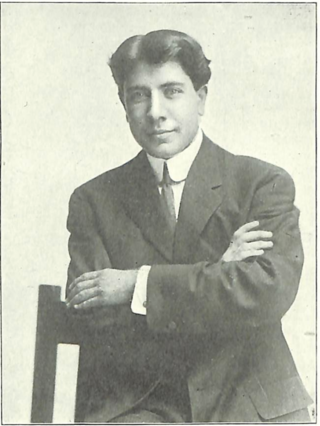
Vahan Hovhannesi Totovents was an Armenian writer, poet and public activist.
Armianskiy Vestnik was an Armenian-Russian weekly published in Moscow, from 1916 to 1918, by A. Jivelegov and I. Amirov. It was re-published in the late 1990s.
The Armenian Mirror-Spectator is a newspaper published by the Baikar Association, in Watertown, Massachusetts.
Armenian newspapers are published in Armenia and in the Armenian diaspora where there are concentrations of Armenians.

Hairenik is an Armenian language weekly newspaper published by the Hairenik Association in Watertown, Massachusetts in the United States. The newspaper belongs to the Armenian political party – Armenian Revolutionary Federation (ARF). Alongside with ARF, it also reflects Armenian diaspora organization – ANCAs views and opinions.
Armenia Fund was established in 1994 in Los Angeles, California. Armenia Fund, Inc. is a 501(c)(3) tax-exempt, non-governmental, non-political corporation. Serving as the United States’ Western Region affiliate of the “Hayastan” All-Armenian Fund along with its nineteen subsidiaries around the world, Armenia Fund, Inc. has issued over $120 million of electricity development guarantee and humanitarian revenue for Armenia. Lately the government of Armenia has been contributing to the fund since the fund has been receiving less support and not being able to meet its initial goals.
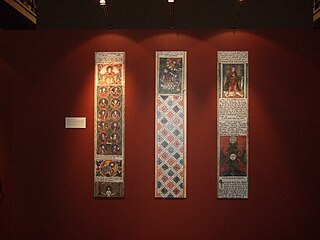
After the introduction of movable printing type to Europe by Johannes Gutenberg in Germany, Armenians from throughout the diaspora began to publish Armenian-language books. The first book which had Armenian letters was published in Mainz (Germany) in 1486. The first Armenian book to be published by the printing press was Urbatagirq—Book of Friday prayers—which was published by Hakob Meghapart in Venice in 1512.
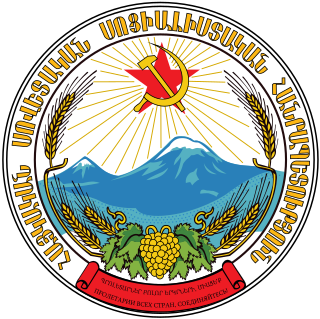
The Communist Party of Armenia was a branch of the Communist Party of the Soviet Union within the Armenian SSR, and as such, the sole ruling party in the Armenian SSR.
Nor Hayastan is an independent Armenian language daily newspaper published in Glendale, California. It was established by Vahan Vahanian (Jansezian).
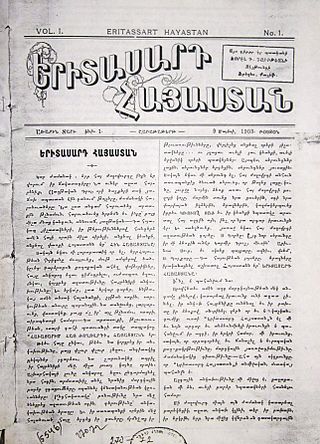
Yeritasard Hayastan was an Armenian-American socio-political and economical periodical published by the Social Democrat Hunchakian Party from 1903 to 2003.
Hayastan was an Armenian public and political daily newspaper published from April 1917 to February 1918 in Tbilisi (Tiflis) by General Andranik.

Azg is a daily newspaper published in Yerevan, Armenia since 1991. Its founder and editor-in-chief was the veteran Lebanese-born Ramkavar activist Hakob Avedikian. who in the 1980s had served as the editor-in-chief of the Ramgavar party's Zartonk daily in Lebanon.
Haratch is an Armenian word for "forward". It may refer to:
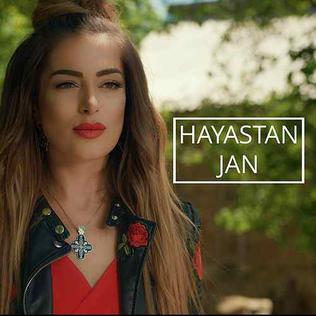
"Hayastan Jan" is a song by Armenian-German singer-songwriter Iveta Mukuchyan. It was released as a single on August 11, 2017, however the music video was released earlier. "Hayastan Jan" was written by Armenian songwriter and TV host Avet Barseghyan and composed by Mukuchyan. On 23 September 2017, Armenia 1 launched a new game show of the same name. Hosted by the songwriter of the track, it had "Hayastan Jan" as its theme music. The song became popular among Armenian diaspora, especially in Lebanon, where it topped the top 10 list of Radio Sevan. On 27 September 2018, the song won a "Song of the Year" award during the ceremony of the same name in Sochi, Russia.
Hayastan meaning Armenia was a multilingual radical publication and the organ of the Armenian Secret Army for the Liberation of Armenia (ASALA). The journal published editorials, official announcements and communiques of ASALA, and articles on political and military issues. The periodical was primarily in Armenian but also contained articles and translations of Armenian-language articles in a number of other languages, notably in Arabic, English, French and Turkish.